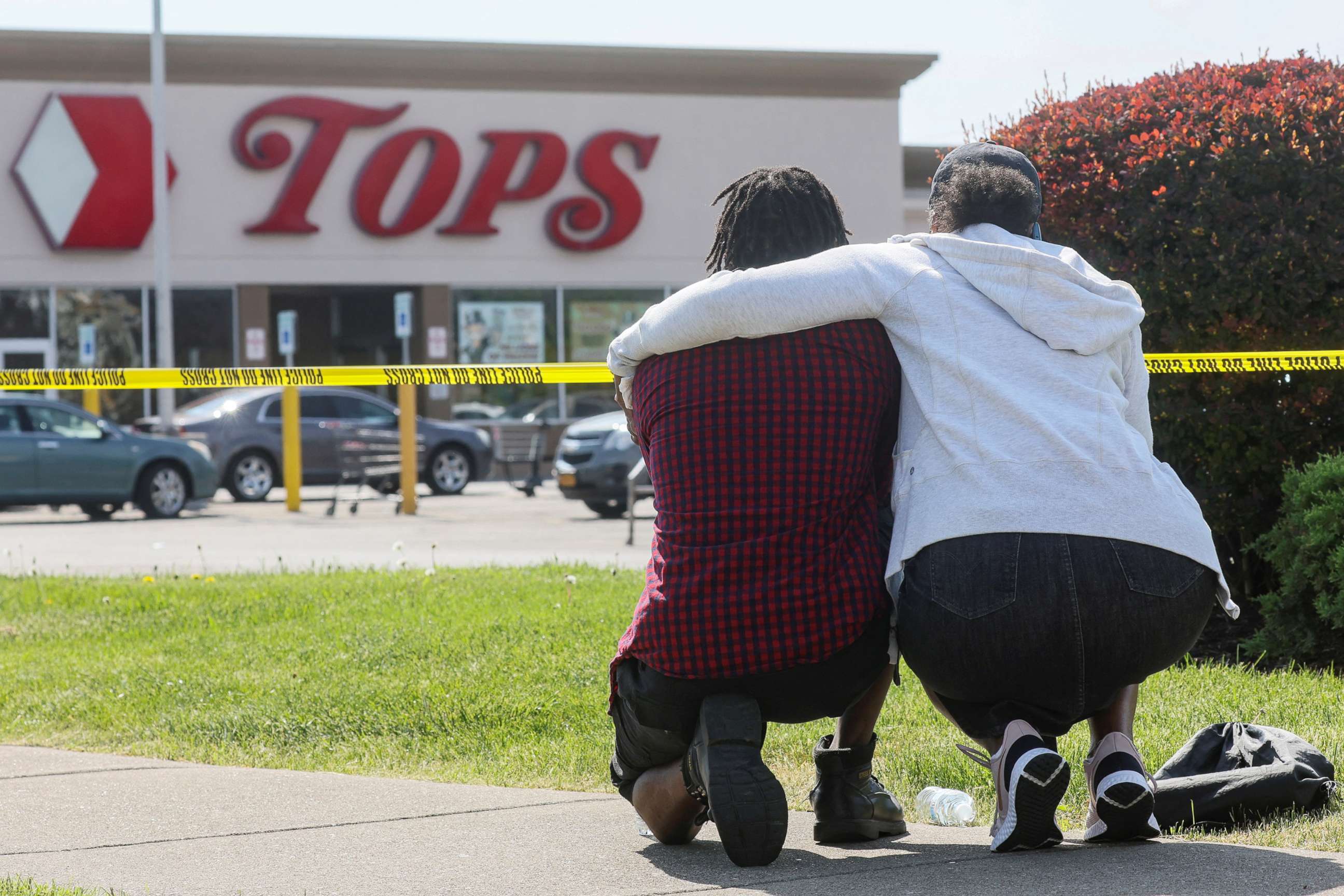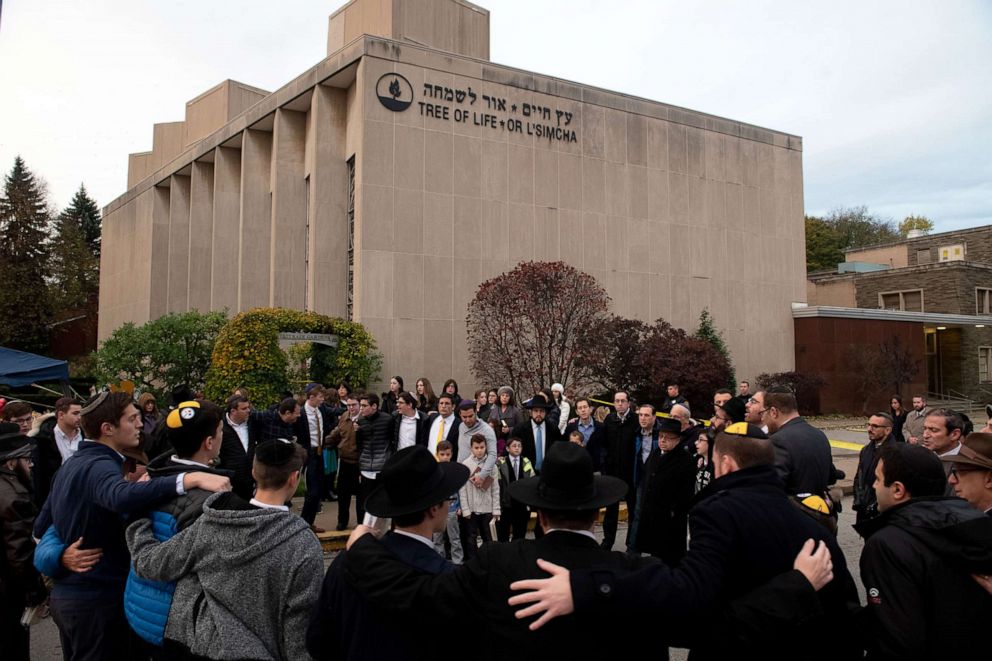How to prevent the next Buffalo shooting: Opinion
Systemic issues foretold this hate crime. Now we need a systemic solution.
When a white gunman opened fire in Buffalo's Tops supermarket last week killing 10 Black people, his actions were the culmination of systemic failures in our violence prevention efforts against the backdrop of an increasingly fractured political and information landscape. It was yet another in an already too-long list of mass casualty attacks by a person with extremist views cultivated online -- a familiar and preventable tragedy.
Americans recognize what happened in Buffalo because they've seen it before. The circumstances that led to the violence at Tops are similar to other hate crimes and mass casualty attacks of the past, and the gunman's prior behavior yet again failed to trigger preemptive law enforcement action.
Like the act itself, America's response was predictable: thoughts, prayers, and toothless calls for change. Gun control measures remain a nonstarter in Congress. Even the domestic terrorism legislation proposed by Democrats will do little to upend the root causes of these racially motivated hate crimes.
There is no silver bullet to prevent the next Buffalo. But there may be a silver lining: The systemic symptoms have been diagnosed. Now we need a systemic solution. Stakeholders from law enforcement to social media, from community leaders to national political figures, must play a role.
The battle for the mind
Americans are, on a regular basis, experiencing acts of violence fueled by content placed online. These messages, videos and memes are often created or fueled by domestic terror thought leaders, foreign intelligence agencies, and foreign terrorist organizations. Their intent is to sow discord, undermine institutions, inspire violence, and encourage others to engage in illegal activity.
In recent years, law enforcement and social media companies have made progress combatting this wave. But as a country, we have not pulled together a cohesive response. More can be done to understand how these threat actors leverage the internet to evoke illicit and at times violent operational objectives. The challenge then becomes using that information and incorporating it into a broader, more comprehensive approach to mitigate threats.

Doing so will require understanding constitutional challenges, like distinguishing the blurry line between protected speech and threat-related activity online. It is not the role of law enforcement to police thought, but to prevent illegal and even violent activity. Some steps can be implemented more swiftly -- for example, educating people about the presence of harmful content and expanding digital literacy programs.
Social media companies, which often bear the brunt of scrutiny in the aftermath of mass-casualty incidents, will play a role in policing their platforms. But de-platforming users is not a long-term solution -- and in some cases may handicap law enforcement and intelligence analysts seeking to understand fringe group messaging. Instead, more can be done to ensure that factually accurate information is easily accessible, so that users who consume hateful content have a counterweight at the ready.
Community collaboration
More can also be done at the local level to detect and mitigate the risk of those traveling down the path toward violence -- not simply by empowering law enforcement, but by harnessing the power of community and people of faith.
A common characteristic of those responsible for most of the mass casualty attacks of the past several years is that they felt socially isolated and angry, and craved a sense of self-worth. Communities must be empowered to address the underlying behavioral health and environmental factors contributing to these individuals' social isolation and rage.
This means broader adoption of multidisciplinary assessment and threat management protocols. The Buffalo shooter, for example, was held for a mental health evaluation last year after making "generalized threats" at his high school. But it does not appear that he was the subject of any threat management efforts.
Health care providers, social services, and police must develop strong partnerships and avenues for communication to get at the underlying issues and to raise alarms and take action when necessary on a case-by-case basis. This is already happening in jurisdictions across the nation -- and it needs to happen in every jurisdiction.

The violence we are experiencing is being fueled by a broad array of ideological beliefs, and seldom fits into the neat little box used by law enforcement to identify domestic terrorists. Elements of these individuals' ideology may expose themselves online. But more often they manifest as a result of feeling socially disconnected and angry.
We need to ensure each community has a consistent capability to assess risks and address underlying conditions. The federal government can help by making resources available to localities, including expertise and training.
All of these measures rely on community leaders trusting law enforcement. Local police need to prioritize finding ways to address the concerns of those in the community to establish trust.
Turn down the temp
Just as hateful and angry rhetoric can fuel violence, it is also effective at generating ratings and inspiring one's political base. Political rhetoric has grown more extreme in recent years. Media personalities, lawmakers and candidates who stretch the bounds of acceptable language -- promoting racist conspiracy theories or characterizing those who disagree with them as un-American or even as enemies of the state -- seldom face meaningful backlash and, in many cases, reap the rewards in the ratings or on Election Day.
Members of the public must take it upon themselves to stop accepting violent rhetoric in politics and in the media. Americans can and should be passionate about their views. We expect those in the media and in government to ask the tough questions and do what is necessary to hold government entities accountable. But the use of polarizing and angry rhetoric not only drives a greater wedge through our nation; it also provides an exploitable opportunity for our adversaries who each day seek to use the fractures in our society to destabilize and weaken our country.
While law enforcement and social media platforms have taken steps to root out ill-intentioned content online, foreign and domestic adversaries have also become savvier in their messaging. They exploit the most divisive issues facing the nation -- including race, immigration, guns, abortion, COVID-19 and election security -- by promoting content intended to exacerbate the fractures and fan the flames of anger that all too often accompany the public debate on these and other issues.
The information warfare playbook used by hostile foreign powers, terrorist groups and criminal organizations strives to have their conspiracy theories, extremist content and fringe narratives repeated by those in the mainstream in the hope that by doing so more people will hear and believe them. So when public figures mimic the language of violent extremism or other conspiracy theories, they validate the words of violent extremists and -- whether intended or not -- they may be providing the justification for those on the cusp of violence to act.
The country continues to lurch from threat to threat, from shooting to shooting. Something is broken. We treat each incident as an individual event, even as evidence of a systemic failure grows.
A systemic problem requires systemic solutions. How many people must die before we come together as a nation to solve it?
John Cohen is an ABC News contributor and the former acting undersecretary for intelligence and counterterrorism coordinator at the U.S. Department of Homeland Security.




